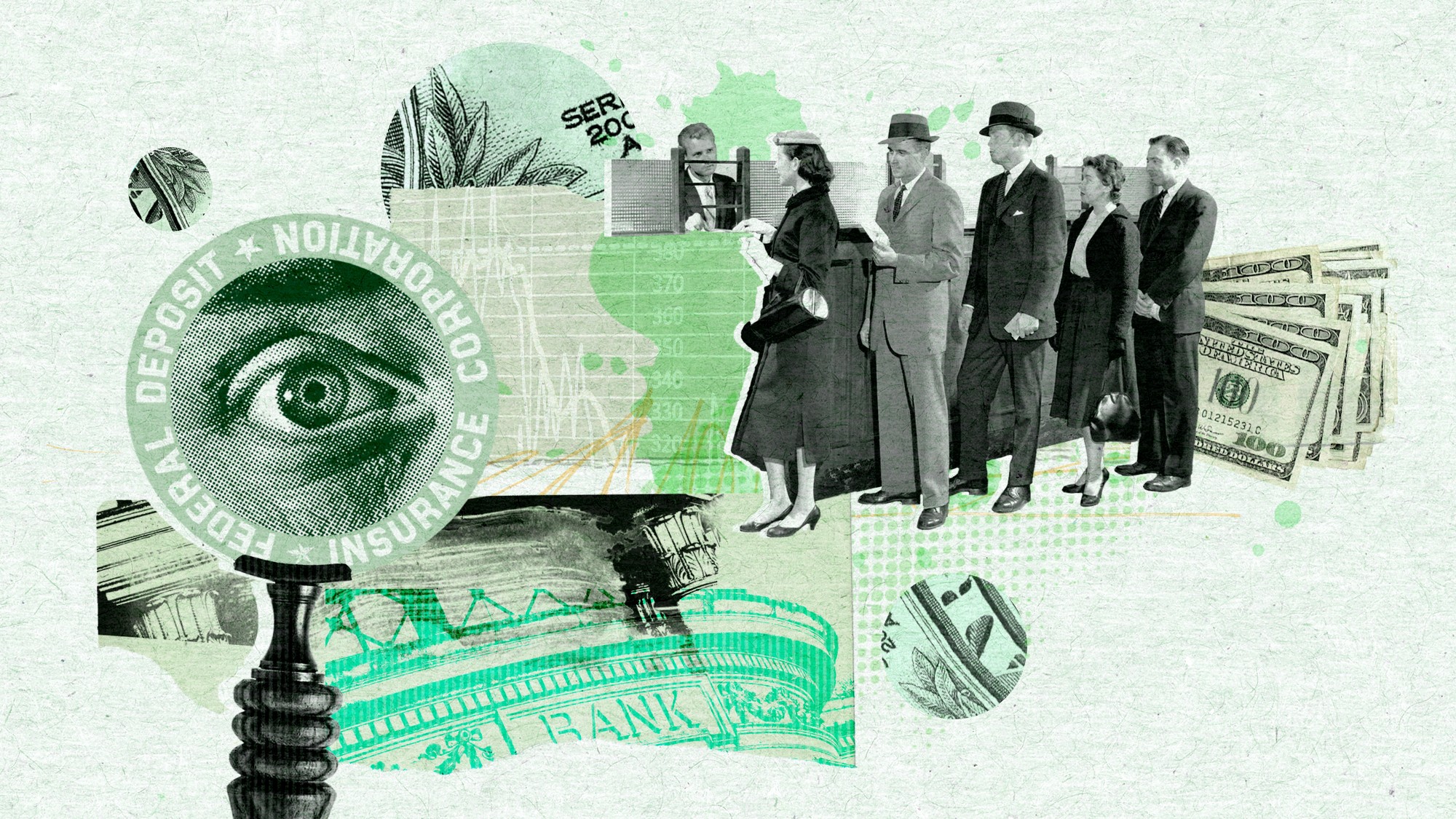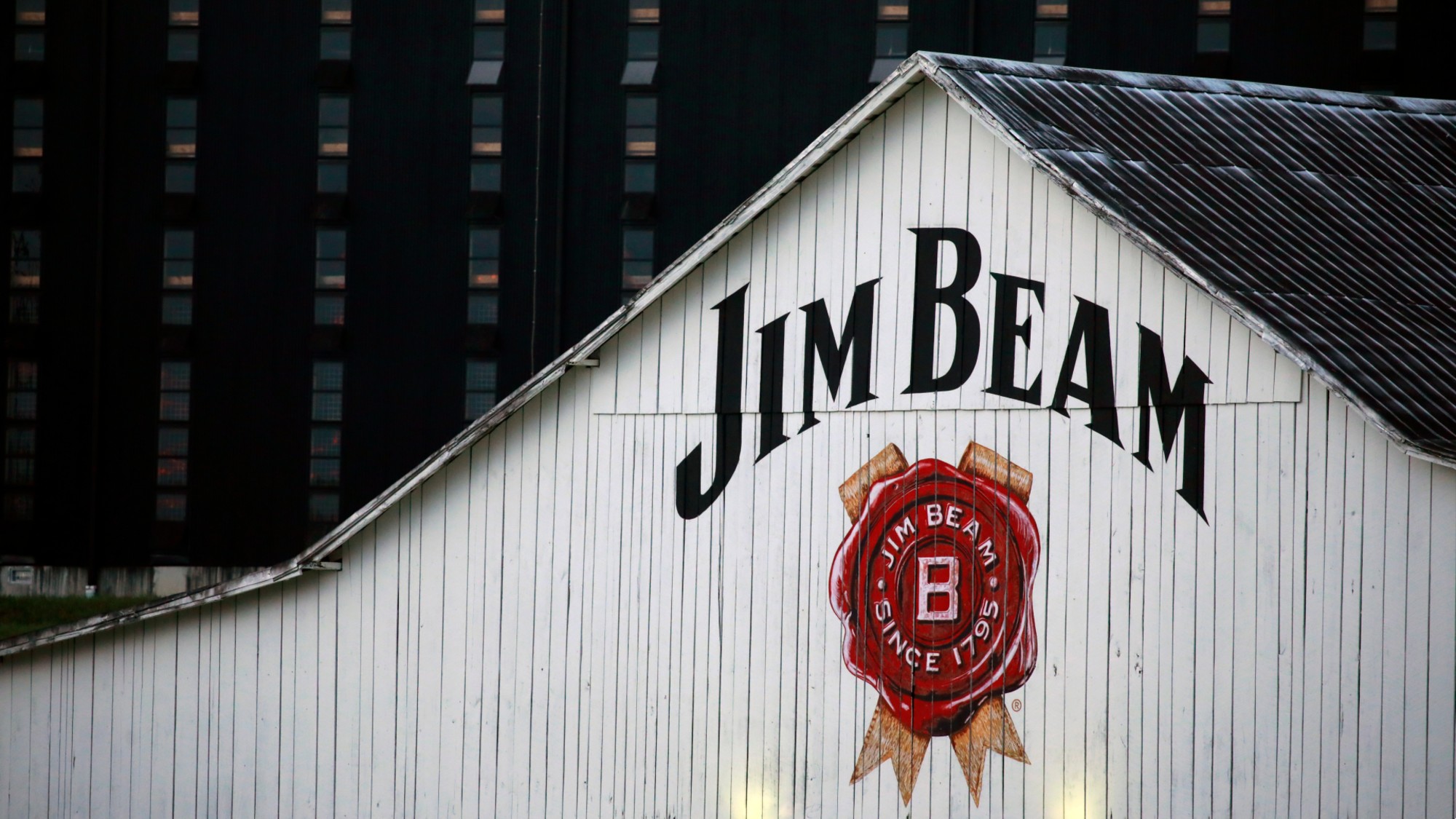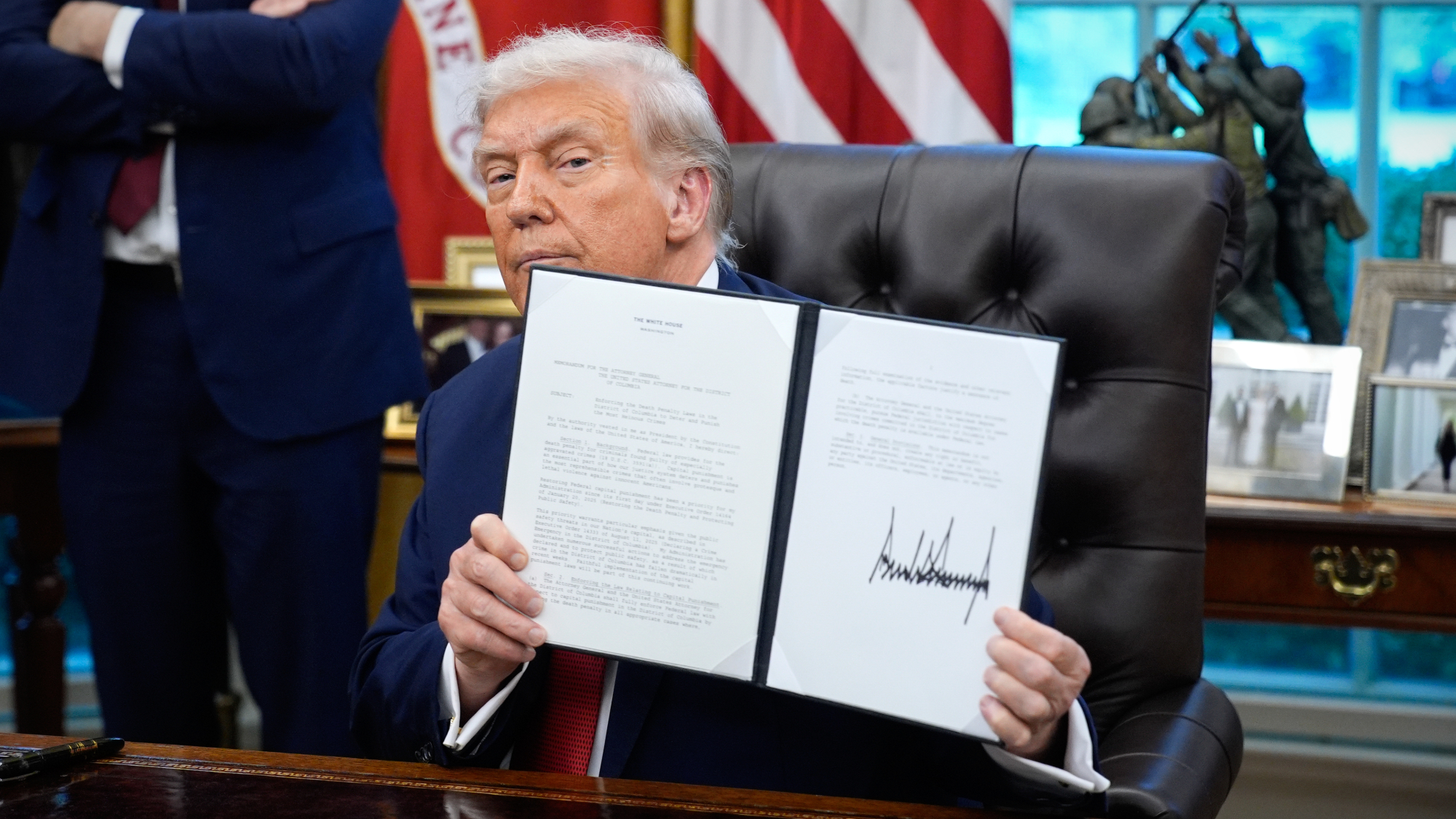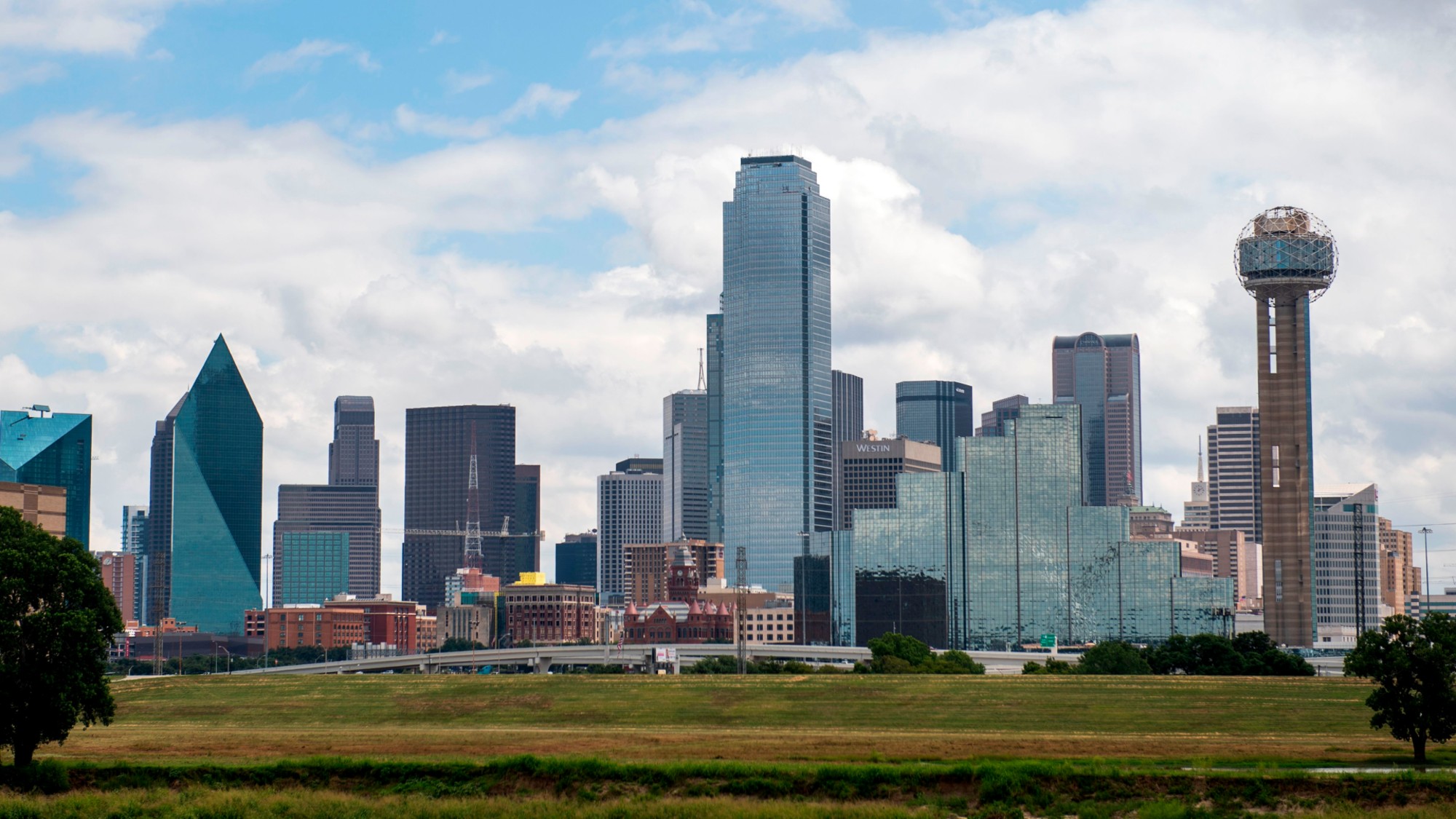What does the FDIC do?
The Federal Deposit Insurance Corporation is now a 'Trump target'


For nearly a century, the Federal Deposit Insurance Corporation has worked to keep the nation's banking system alive and thriving. But the Trump administration's recent cuts to federal staffing and its interest in eliminating longstanding federal agencies are putting the agency's future in question.
The FDIC is built "to prevent another banking crisis," said Oregon Public Broadcasting. Now, though, it is a "Trump target." Even before Trump took office, the agency struggled with "several internal problems, including staffing shortages" that were making it more difficult to monitor banks and prevent their failures. The Trump administration's job cuts across the federal bureaucracy have exacerbated those problems. And Democrats worry the White House's anti-regulatory bent will cripple the agency. The FDIC's staff losses "threaten the reliability and integrity of federal deposit insurance," said Sen. Elizabeth Warren (D-Mass.).
"Though it's not very common, a bank can fail when it takes on too much risk," said CNBC. FDIC insurance is designed to keep account holders' money from being wiped out when a bank goes under, insuring many kinds of deposits — for checking, savings and other kinds of accounts — up to $250,000 for each account holder. That does not only protect Americans with money in the bank; it also protects the banking system, making it less likely customers will "panic and rush" to withdraw money during a financial crisis, said CNBC. (Remember the bank rush scene from "It's a Wonderful Life?")
The Week
Escape your echo chamber. Get the facts behind the news, plus analysis from multiple perspectives.

Sign up for The Week's Free Newsletters
From our morning news briefing to a weekly Good News Newsletter, get the best of The Week delivered directly to your inbox.
From our morning news briefing to a weekly Good News Newsletter, get the best of The Week delivered directly to your inbox.
Confidence matters
The FDIC was created in 1933 to "help the U.S. navigate a catastrophe that put thousands of banks out of business," said NPR. The key insight: Banks required customer confidence to function — it was a "vital part" of "assuring solvency," said an adviser to President Franklin D. Roosevelt — and deposit insurance helped bolster that confidence. Deposits were initially insured up to $2,500 per account holder, increasing over the years to $250,000 today. And it worked. "Only nine banks failed in 1934, compared to more than 9,000 in the preceding four years," the FDIC said in a history of the agency.
"That guaranteed $250,000 does not come from taxpayers," said CBS News. Instead, the FDIC assesses quarterly premiums on insured banks — depending on the size of their holdings — and the money invested in Treasury securities. When a bank does fail, the FDIC moves in with three options: Close the bank and pay off depositors, take over the bank operations or find a new buyer. The most important factor? "The customer experience does not change much," said CBS.
Supervising and regulating banks
The FDIC does more than insurance — it also does regulation. The agency "directly supervises and examines more than 5,000 banks and savings associations" to ensure their operations are sound, the FDIC says on its website. It also ensures those banks comply with consumer protection laws "including the Fair Credit Billing Act, the Fair Credit Reporting Act, the Truth in Lending Act and the Fair Debt Collection Practices Act, to name a few."
Now all that is up in the air. White House officials are looking to "curtail and combine the power of banking regulators," said The Wall Street Journal. The administration has already largely gutted one such agency, the Consumer Financial Protection Bureau. Bank executives have long complained that the industry "suffers under too much regulation," said the Journal. But they would be "wary" if changes to the agency "threatened to undermine even the perception" of its ability to keep Americans' bank deposits safe, and the banking system stable.
A free daily email with the biggest news stories of the day – and the best features from TheWeek.com
Joel Mathis is a writer with 30 years of newspaper and online journalism experience. His work also regularly appears in National Geographic and The Kansas City Star. His awards include best online commentary at the Online News Association and (twice) at the City and Regional Magazine Association.
-
 Tariffs have American whiskey distillers on the rocks
Tariffs have American whiskey distillers on the rocksIn the Spotlight Jim Beam is the latest brand to feel the pain
-
 TikTok secures deal to remain in US
TikTok secures deal to remain in USSpeed Read ByteDance will form a US version of the popular video-sharing platform
-
 Phish food for thought: Ben & Jerry’s political turmoil
Phish food for thought: Ben & Jerry’s political turmoilIn the Spotlight War of words over brand activism threatens to ‘overshadow’ the big ice cream deal
-
 Texas is trying to become America’s next financial hub
Texas is trying to become America’s next financial hubIn the Spotlight The Lone Star State could soon have three major stock exchanges
-
 Who will be the next Fed chair?
Who will be the next Fed chair?Today's Big Question Kevin Hassett appears to be Trump’s pick
-
 What a rising gold price says about the global economy
What a rising gold price says about the global economyThe Explainer Institutions, central banks and speculators drive record surge amid ‘loss of trust’ in bond markets and US dollar
-
 US mints final penny after 232-year run
US mints final penny after 232-year runSpeed Read Production of the one-cent coin has ended
-
 Would a 50-year mortgage make home ownership attainable?
Would a 50-year mortgage make home ownership attainable?Today's Big Question Trump critics say the proposal is bad policy


